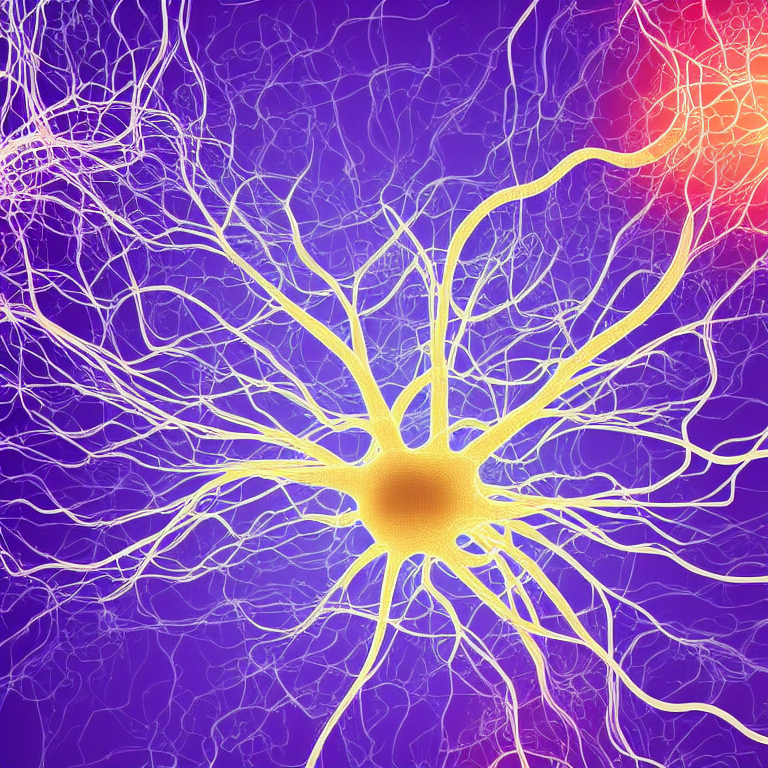I often encounter situations when people are not exactly unaware of the withdrawal syndrome, but they underestimate it very much. After prolonged use, the body and its systems need time to adjust to work without an agent constantly coming from outside and changing the neurochemistry of the brain. And to us, confident up to a certain point in the strength of our will and patience, it seems that we will overcome this challenge without any problems. Well, withdrawal syndrome can be very severe and unpleasant in all respects. However, for obligate changes, it does not become the main obstacle. The one that follows comes on the scene – Post-acute withdrawal syndrome (PAWS).
What is Post-Acute Withdrawal Syndrome?

Post-acute withdrawal syndrome (PAWS) refers to a collection of symptoms that can occur after the acute phase of withdrawal from certain substances, particularly drugs or alcohol. It is a protracted withdrawal syndrome that can persist for weeks, months, or even years after the individual has stopped using the substance.
PAWS is believed to arise from the neuroadaptations that occur in the brain during chronic substance use. When a person uses drugs or alcohol over an extended period, the brain undergoes changes to compensate for the presence of the substance. These changes include alterations in neurotransmitter activity, receptor density, and overall brain circuitry.
When the person abruptly discontinues or significantly reduces their substance use, the brain needs time to readjust to the absence of the substance. This process can result in a variety of physical, psychological, and emotional symptoms, which collectively constitute PAWS.
Why do we experience PAWS in recovering?

The underlying mechanisms contributing to PAWS are not fully understood but are believed to involve several factors, including:
Neurochemical imbalances: Substance abuse disrupts the delicate balance of neurotransmitters in the brain, such as dopamine, serotonin, and gamma-aminobutyric acid (GABA). During withdrawal, these neurotransmitter systems may take time to return to their pre-substance use equilibrium, leading to mood swings, anxiety, and depression.
Receptor changes: Chronic substance use can cause alterations in the number, density, and sensitivity of neurotransmitter receptors in the brain. When substance use is abruptly discontinued, the brain needs time to restore these receptor systems to their normal state, which can contribute to various withdrawal symptoms.
Stress response dysregulation: Substance abuse can impact the brain’s stress response systems, including the hypothalamic-pituitary-adrenal (HPA) axis. During withdrawal, these systems may be dysregulated, leading to heightened stress, irritability, and emotional instability.
Cognitive changes: Prolonged substance use can affect cognitive functions such as memory, attention, and decision-making. When substances are removed, the brain needs time to repair and restore these cognitive processes, resulting in cognitive difficulties during PAWS.
It’s important to note that not everyone who recovers from substance abuse will experience PAWS, and the severity and duration can vary widely among individuals.
When does post-acute withdrawal syndrome occur?

PAWS typically occurs after the acute phase of withdrawal from substances, usually following a period of sustained and heavy substance use. The exact timing and duration of PAWS can vary among individuals, depending on many factors.
The acute phase of withdrawal typically lasts for a few days to a couple of weeks, during which individuals experience immediate and intense withdrawal symptoms as the substance clears from their system. These acute symptoms can include physical discomfort, cravings, insomnia, anxiety, and mood swings.
After the acute phase, PAWS may emerge, characterized by a more protracted and milder set of symptoms that can persist for a really long time. PAWS can occur regardless of the substance, but it is commonly associated with substances that heavily impact the brain’s reward and neurotransmitter systems, such as alcohol, opioids, benzodiazepines, and stimulants.
The onset of PAWS can vary, but it often begins within a few weeks after substance cessation. However, in some cases, PAWS may emerge later, especially for substances that produce long-lasting changes in the brain. For example, PAWS related to alcohol can manifest several weeks or months after quitting, while PAWS associated with benzodiazepines may take longer to develop.
How long do PAWS symptoms usually last?

The duration of Post-Acute Withdrawal Syndrome can vary significantly among individuals. In general, PAWS symptoms can last for weeks, months, or even years, as I have already mentioned. It’s important to note that the severity and duration of PAWS can be influenced by several factors, including:
Substance abused: Different substances can have varying impacts on the brain and body, leading to differences in the duration and intensity of PAWS symptoms. For example, PAWS associated with alcohol or benzodiazepine withdrawal can last longer compared to PAWS related to marijuana or stimulant withdrawal.
Duration and intensity of substance use: Individuals who have engaged in prolonged and heavy substance use may experience more pronounced and longer-lasting PAWS symptoms compared to those with shorter or less intense substance use histories.
Individual factors: Biological, psychological, and environmental factors can also influence the duration of PAWS. Each person’s unique physiology, genetics, overall health, and stress levels can impact how long PAWS symptoms persist.
It’s important to remember that PAWS is a dynamic process, and symptoms may fluctuate in intensity and frequency over time. Initially, symptoms may be more pronounced and gradually diminish as recovery progresses. However, some individuals may experience intermittent or lingering symptoms throughout their recovery journey.
Can post-acute withdrawal syndrome be avoided?
PAWS is a natural part of the recovery process for many individuals who have experienced problems with substances. While it may not be entirely avoidable, there are strategies that can help minimize its impact and promote a smoother recovery journey. We will elaborate on the steps to alleviate and prevent the PAWS at the end of the article.
What are the most common symptoms of PAWS?

The most common symptoms of Post-Acute Withdrawal Syndrome can vary depending on the substance abused and the individual. However, there are several commonly reported symptoms associated with PAWS:
Mood swings: Fluctuations in mood are a hallmark of PAWS. This can include periods of anxiety, irritability, depression, or emotional instability. These mood swings may be unpredictable and intense.
Sleep disturbances: Many individuals experience disrupted sleep patterns during PAWS. This can manifest as difficulty falling asleep, staying asleep, or experiencing restful sleep. Insomnia, vivid dreams, or nightmares are commonly reported.
Cognitive difficulties: PAWS can affect cognitive functions such as memory, attention, concentration, and decision-making. Individuals may experience difficulties with remembering things, staying focused, or making sound judgments.
Fatigue and low energy: Persistent fatigue, low energy levels, and feelings of lethargy are common during PAWS. Individuals may struggle with daily activities and lack motivation.
Physical discomfort: Various physical symptoms can occur during PAWS. These may include headaches, muscle tension, tremors, gastrointestinal disturbances (such as nausea or diarrhea), and general malaise.
Cravings and drug obsession: Intense cravings for the substance and preoccupation with drug-related thoughts can persist during PAWS. These cravings may come and go but can be powerful triggers for relapse if not managed effectively.
Not all individuals will experience every symptom, and the severity and duration of symptoms can vary. Additionally, individuals may experience symptoms specific to the substance they were using.
PAWS for Different Drugs

Post-acute withdrawal syndrome (PAWS) can manifest differently depending on the specific substance abused. Here is an overview of PAWS for different drugs.
Alcohol
PAWS associated with alcohol withdrawal can include:
- Mood swings, including anxiety, depression, and irritability.
- Sleep disturbances, such as insomnia and vivid dreams.
- Fatigue and low energy levels.
- Cognitive difficulties, including problems with memory, concentration, and decision-making.
- Physical symptoms, such as headaches, tremors, and gastrointestinal disturbances.
- It’s important to note that severe alcohol dependence can lead to a more severe form of PAWS known as Delirium Tremens (DT), characterized by hallucinations, confusion, seizures, and potentially life-threatening complications. Medical supervision is crucial during alcohol withdrawal.
Opioids
PAWS following opioid withdrawal can involve:
- Mood disturbances, such as anxiety, irritability, and dysphoria.
- Insomnia and sleep disturbances.
- Flu-like symptoms, including muscle aches, sweating, and gastrointestinal distress.
- Cravings for opioids.
- Cognitive difficulties, such as impaired concentration and memory.
- Opioid PAWS can be particularly challenging due to the intensity of cravings and potential for relapse. Medications like buprenorphine and methadone can be used as part of a comprehensive treatment plan to alleviate withdrawal symptoms and reduce the risk of relapse.
Benzodiazepines
PAWS associated with benzodiazepine withdrawal may include:
- Anxiety, panic attacks, and increased sensitivity to stress.
- Sleep disturbances, including insomnia and vivid dreams.
- Mood swings and emotional instability.
- Cognitive difficulties, such as impaired memory and concentration.
- Physical symptoms, such as muscle tension, tremors, and gastrointestinal issues.
- Benzodiazepine withdrawal can be complex and potentially dangerous, particularly when individuals have been using high doses or for prolonged periods. Medical supervision and a gradual tapering schedule are often necessary to minimize the risks of withdrawal.
Stimulants
PAWS following stimulant withdrawal (e.g., amphetamines, cocaine) may involve:
- Fatigue, low energy, and excessive sleepiness.
- Depression, irritability, and anhedonia (inability to experience pleasure).
- Increased appetite and weight gain.
- Cognitive difficulties, including impaired attention, memory, and motivation.
- Intense drug cravings and emotional dysregulation.
- PAWS related to stimulants can be challenging due to the prolonged period of low energy and depression that individuals may experience. Engaging in healthy lifestyle habits, such as regular exercise and proper nutrition, is important for overall recovery.
Antidepressants
PAWS associated with discontinuation of antidepressants, particularly selective serotonin reuptake inhibitors (SSRIs), can include:
- Flu-like symptoms such as headache, fatigue, and dizziness.
- Gastrointestinal disturbances, including nausea, vomiting, and diarrhea.
- Sleep disturbances, such as insomnia or vivid dreams.
- Mood changes, including irritability, anxiety, or depression.
- Sensory disturbances, such as brain zaps (brief electric shock sensations).
- It’s important to note that PAWS from antidepressant withdrawal is generally milder compared to other substances. Gradual tapering under medical supervision is often recommended to minimize withdrawal symptoms.
Marijuana
PAWS associated with marijuana withdrawal can include:
- Irritability, restlessness, and mood swings.
- Sleep disturbances, such as insomnia or vivid dreams.
- Decreased appetite or weight loss.
- Anxiety and depression.
- Difficulty concentrating and memory impairments.
- Marijuana PAWS symptoms tend to be less severe compared to other substances, and most individuals experience significant improvement within a few weeks. Engaging in healthy coping strategies, such as exercise and stress management techniques, can help alleviate symptoms.
LSD
PAWS following LSD use is less common compared to other substances. However, individuals who have used LSD extensively or in high doses may experience persisting effects, sometimes referred to as hallucinogen persisting perception disorder (HPPD). Symptoms can include:
- Visual disturbances, such as seeing trails, halos, or geometric patterns.
- Distorted perception of time and space.
- Emotional lability and mood changes.
- HPPD is relatively rare, and the exact mechanisms are not well understood. If someone experiences persistent LSD-related symptoms, it is important to seek medical evaluation and support.
MDMA
PAWS associated with MDMA withdrawal are less well-documented compared to other substances. However, some individuals may experience the following symptoms:
- Mood changes, such as depression, anxiety, or irritability.
- Sleep disturbances and fatigue.
- Difficulty with concentration and memory.
- MDMA affects the serotonin system, and withdrawal symptoms may be related to temporary disruptions in serotonin function. Engaging in a healthy lifestyle, including regular sleep patterns and exercise, can help support recovery.
It’s important to note that individual experiences with PAWS may vary. Substance use history, duration and intensity of use, and individual factors can influence the severity and duration of PAWS symptoms.
Managing PAWS

Post-Acute Withdrawal Syndrome treatment means start working on yourself even before the syndrome develops and involves a combination of self-care strategies, support systems, and professional guidance. Here are some detailed and structured approaches to managing PAWS:
0. Gradual tapering:
When discontinuing certain substances, such as benzodiazepines or opioids, a gradual tapering schedule under medical supervision can help reduce the severity of withdrawal symptoms, including PAWS. Slowly decreasing the dosage over time gives the brain and body a chance to adjust more gradually.
- Education and Awareness:
Learn about PAWS: Understanding what PAWS is and knowing that it is a normal part of the recovery process can help individuals cope better with the symptoms.
Recognize triggers: Identify specific situations, people, or places that may trigger cravings or worsen PAWS symptoms. Awareness of triggers can help individuals develop strategies to avoid or manage them effectively.
- Healthy Lifestyle Habits:
Balanced diet: Eating a nutritious and well-balanced diet can support overall well-being and aid in the recovery process. Focus on consuming foods rich in vitamins, minerals, and antioxidants.
Regular exercise: Engaging in regular physical activity can help improve mood, reduce stress, and promote better sleep. Aim for at least 30 minutes of moderate exercise most days of the week.
Adequate sleep: Establish a consistent sleep routine and create a sleep-friendly environment. Avoid electronic devices before bedtime and practice relaxation techniques to promote quality sleep.
- Stress Management and Coping Strategies:
Stress reduction techniques: Explore stress management techniques such as deep breathing exercises, meditation, yoga, or mindfulness practices. These can help reduce anxiety and promote relaxation.
Healthy coping mechanisms: Engage in activities that provide a sense of fulfillment and joy, such as hobbies, creative outlets, or spending time in nature. Expressing emotions through journaling or talking to a supportive person can also be helpful.
- Support Systems:
Build a support network: Surround yourself with understanding and supportive individuals who can provide encouragement, accountability, and practical assistance. This can include family, friends, support groups, or online recovery communities.
Counseling or therapy: Consider seeking professional counseling or therapy to address the emotional and psychological aspects of PAWS. Therapists can provide coping strategies, address underlying issues, and support overall recovery.
- Professional Guidance:
Consult healthcare professionals: Seek guidance from healthcare providers experienced in addiction treatment. They can provide personalized advice, monitor progress, and adjust treatment plans as necessary.
Medication-assisted treatment (MAT): Depending on the substance involved, certain medications may be prescribed to manage withdrawal symptoms and reduce the impact of PAWS. Work with a healthcare professional to explore if medication-assisted treatment is appropriate.
6. Long-term aftercare:
Continuing care after the initial withdrawal phase is essential for maintaining recovery and managing PAWS. This may involve ongoing therapy, participation in support groups, regular check-ins with healthcare providers, and the development of a relapse prevention plan.
Remember that managing PAWS is a gradual process, and it may take time to see significant improvements. Patience, perseverance, and self-compassion are important during this phase of recovery. Regularly communicate with healthcare professionals, stay engaged in supportive activities, and seek professional help when needed.
Summary

Post-Acute Withdrawal Syndrome is a phenomenon that occurs during the recovery process from substance abuse. While acute withdrawal symptoms typically subside within a few weeks, PAWS can persist for a longer duration, ranging from weeks to months or even years for some individuals.
PAWS is characterized by a range of symptoms that can vary in intensity and duration. Common symptoms include mood swings, sleep disturbances, cognitive difficulties, fatigue, physical discomfort, cravings, and drug obsession. These symptoms can have a significant impact on an individual’s emotional well-being, daily functioning, and overall recovery journey.
The severity and duration of PAWS can be influenced by factors such as the substance abused, duration and intensity of substance use, individual biology, and overall health. Different substances, such as alcohol, opioids, benzodiazepines, and stimulants, can produce unique PAWS profiles.
Managing PAWS involves a comprehensive approach that may include gradual tapering, medication-assisted treatment, healthy lifestyle habits, social support, counseling or therapy, and long-term aftercare. Each person’s experience with PAWS is unique, and seeking professional guidance is essential to develop an individualized plan for managing symptoms effectively.
While PAWS can be challenging, it’s important to remember that it is a normal part of the recovery process. With proper support and treatment, individuals can navigate through PAWS, improve their overall well-being, and achieve long-term recovery from a disbalanced relationship with substances.
✔️
This marks the finish of today’s session. It is my hope that this piece was enlightening.
If you desire to advance the growth of this blog, I suggest the following actions:
- Subscribe to our social networks.
- Circulate a link to this article among your associates.
- Give recognition to this blog on relevant platforms or discussion groups.
Should you identify any necessary additions or corrections in this article, feel free to initiate a dialogue with me via Contact Form. https://mindheal.com/contact-us/
I am always open to communication.
I appreciate your valuable time and consideration 🩺




